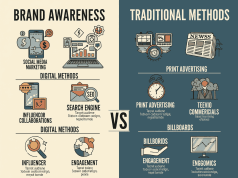As we move further into the digital era, the advertising landscape is undergoing unprecedented transformation driven by the power of big data. By 2025, businesses that harness the capabilities of data analytics will find themselves at a significant advantage. This article explores how big data is shaping advertising strategies, enhancing customer engagement, and driving business success.
The Big Data Revolution
Big data refers to the vast volumes of structured and unstructured data generated every day from various sources like social media, customer interactions, transaction records, and IoT devices. As technology continues to evolve, the ability to collect, analyze, and derive actionable insights from this data is becoming increasingly sophisticated.
In 2025, we expect the volume of data generated worldwide to grow exponentially—reaching approximately 175 zettabytes. This massive pool of data presents a goldmine of opportunities for advertisers to connect with their audiences in more targeted and meaningful ways.
Enhanced Targeting and Personalization
One of the most significant benefits of big data in advertising is its capacity for enhanced targeting and personalization. Advertisers can segment their audiences based on demographics, interests, behaviors, and purchasing history. In 2025, we can expect more advanced algorithms that analyze data in real-time, allowing brands to deliver personalized content and offers tailored to individual preferences.
For instance, a consumer who frequently browses hiking gear may receive targeted ads for the latest outdoor equipment while being presented with personalized blog content about hiking trails. This level of customization fosters a deeper connection between brands and their customers, enhancing customer loyalty and increasing conversion rates.
Predictive Analytics: Anticipating Consumer Behavior
Predictive analytics will play a crucial role in shaping advertising strategies in 2025. By leveraging historical data, advertisers can forecast future consumer behaviors and trends. This will allow companies to optimize their advertising campaigns, ensuring the right message reaches the right audience at the right time.
For example, if predictive analytics indicates an uptick in demand for sustainable products, brands can adjust their messaging and inventory accordingly. By staying ahead of the curve, businesses can enhance their marketing effectiveness and maintain a competitive edge in the marketplace.
Real-Time Decision Making
The future of advertising hinges on agility and responsiveness, traits that big data enables through real-time decision-making. In 2025, advertisers will rely heavily on dashboards and analytics tools that provide instant insights into campaign performance. This will allow marketers to adjust strategies on-the-fly based on metrics such as engagement rates, click-through rates, and conversion rates.
Real-time data analysis eliminates guesswork and empowers businesses to make informed decisions based on current market dynamics. As a result, advertisers can optimize their ROI and adapt strategies to respond to the evolving needs of consumers.
The Role of Artificial Intelligence
Artificial Intelligence (AI) and machine learning will serve as essential partners in the big data landscape of advertising. AI-driven algorithms can sift through massive datasets to identify patterns and trends that might go unnoticed by human analysts. By 2025, we can anticipate more sophisticated AI tools that automate bidding processes, optimize ad placements, and enhance audience targeting.
Moreover, AI can facilitate the creation of ad content itself—using natural language processing and image recognition to craft compelling and relevant advertisements. This level of innovation will streamline the creative process and free up marketers to focus on strategy and ideation.
The Rise of Privacy-First Advertising
With the growing importance of data comes the need for data privacy. In 2025, the advertising industry will face increasing scrutiny over data collection practices. Stricter regulations may arise, and consumers will likely demand greater transparency about how their data is used.
Successful advertising strategies will incorporate privacy-first approaches while still leveraging big data insights. Brands that prioritize consumer trust through ethical data practices will stand out in the crowded marketplace.
Conclusion
As we approach 2025, the integration of big data into advertising will reshape how brands engage with consumers. Enhanced targeting, predictive analytics, real-time decision-making, and AI innovation will redefine advertising success, enabling businesses to connect with their audiences more effectively than ever before. However, as the landscape evolves, marketers must also navigate the complexities of data privacy, ensuring they build trust and loyalty among consumers.
The future of advertising is bright for those ready to embrace the data revolution, proving that when it comes to turning data into decisions, the possibilities are limitless.









